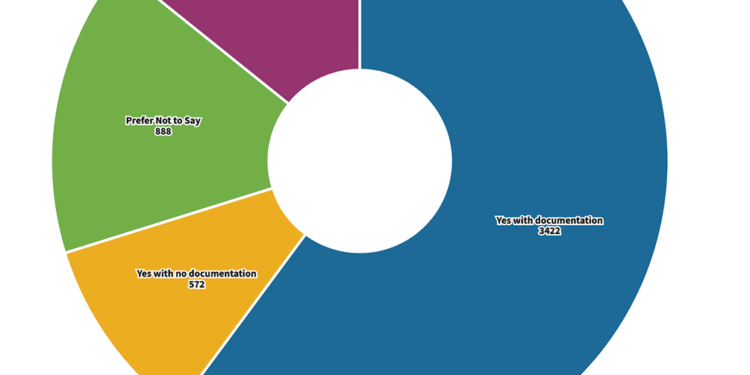After a year of no on-campus events and countless restrictions aimed at preventing the spread of COVID-19, Samford administrators assessed the COVID statistics on campus and in the surrounding area this year and made changes accordingly.
Students who spoke to The Crimson voiced confusion over the real threat of COVID and the vaccination rates on Samford’s campus. Samford’s Chief Strategy Officer Colin Coyne said that he hopes to minimize this confusion by increasing communication from administration.
“I think communication is big,” Coyne said. “In the absence of feedback, people create their own. And it’s never positive.”
Coyne said that he receives emails with comments and suggestions from students, faculty and parents daily, and he takes care to research and respond to each one.
“My job isn’t to bring my personal bias and my personal experiences. My job is to come up, as agnostically as possible, with what is the best corporate policy in a congregate and residential environment,” Coyne said.
The percent positive rate of COVID cases, according to Johns Hopkins School of Public Health, is the percentage of all coronavirus tests performed that are actually positive. As of right now, the CDC recommends that counties wait for their positive test rate to be 5% or below before permitting masks to be removed indoors. Currently, Jefferson County’s positive rate, according to Alabama Political Reporter, is around 7% and is dropping at a steady pace every day.
According to Coyne, the current positivity rate on Samford’s campus is less than 0.2%, and the breakthrough rate is less than 1%. Coyne largely attributes this to COVID testing done before big events, such as re-entry testing to return to campus, the freshman retreat and Panhellenic Bid Day.
A few weeks ago, the university reintroduced random sentinel testing across campus. Coyne said he landed on a sample size of 300 students and faculty members to get the most accurate results representative of the entire Samford body. He explained that this sample size is dependent on students showing up for sentinel testing, something that they have had difficulty with in the past.
“Anybody that wants to work with us, we’re going to work with them. My belief is that students are the solution,” Coyne said.
The vaccination rate on campus has risen steadily since the required vaccine response at the beginning of the semester. The cumulative vaccination rate, according to data acquired by Coyne and administration, of both students and employees is currently at 73%. Among these, 63% of respondents provided documentation as proof of vaccination and 10% did not.
“For most people on campus who are in that non-vaccinated category, what I hope happens is that it prompts them to ask more questions, and then make their choice. I am ruthless about defending people’s decisions. Nobody should shame anybody else,” Coyne said.
After the success of Family Weekend a few weeks ago, Coyne said he is “cautiously optimistic” that future campus-wide events will be successful as well, without causing a rise in COVID cases.
“I think Parents Weekend is one of the times where we got the chance to look back and see ourselves at our best, as one community,” Coyne said. “I hope it reaffirmed the trust that parents put in us.”
Coyne expressed concern for the time between Thanksgiving and Christmas where students will be returning to campus after traveling, as well as Step Sing, because these will offer opportunity for a rise in COVID cases. Coyne said that there is talk of rapid testing all students involved in Step Sing. The current plan means students would get tested before the first practices, in the middle of rehearsals and right before performances.
Despite the possibility of an uptick in cases, Coyne said he knows that events like Step Sing are essential to the culture of Samford, and he can already see a huge difference in the morale among students compared to last year.
“The willingness to step back and put others above yourself just a little bit – that is why Samford’s numbers are 0.2%. That success we see, people can step back and say, ‘we collectively did this, and it’s paying off,’” Coyne said.
On Friday, Oct. 22, Samford University released an update on the COVID-19 protocols on campus. Masks are now only required inside instruction spaces, such as classrooms, and “strongly recommended in all other indoor public spaces,” according to an email sent out to the campus community. Visitation by non-Samford students in residence halls is now allowed as well. For more information on this COVID update, visit thesamfordcrimson.com.



Staff Writer






